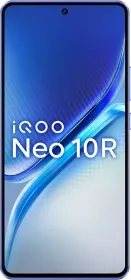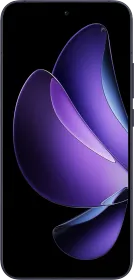With remote work, online learning, and creating digital content on the rise, having reliable and affordable digital storage solutions is super important. We usually use virtual storage options like Google Drive, OneDrive, and Dropbox. But sometimes, because our data is sensitive, using cloud storage isn’t the best idea. That’s when private network-attached storage comes in. Synology has recently introduced BeeStation as a solution in India, giving tech-savvy individuals and families a smooth way to manage and protect their important data. We’ve been using BeeStation for a while now, and with that experience, here’s our review of Synology BeeStation.
Jump to :
Pros
- Durable Design
- Portable
- Easy setup
- Backs up photo in background
- Integrations for popluar cloud storages
- USB expansion options
Cons
- No DNLA or PLEX support
- SMB disabled by default
Synology BeeSataion Review: Design
BeeStation by Synology has a design similar to that of WD My Cloud External drive but with an improved look and feel. It resembles a book that can be easily placed on a shelf. It is made of black plastic with a slight texture and the BeeStation logo on each side. Although it may seem subtle, its design is intended to blend into a home office perfectly.

It has grills on the top and bottom, and while there is no easy way to open it, the manual may have all the information required to replace the drive in case it fails. BeeStation is connected to the outside world through a single gigabit Ethernet port and has two USB ports on the back, one USB-C and one USB-A, both USB 3.2 Gen 1. Although USB 3.2 Gen 2 might have been a better option, it’s not a big miss, considering BeeStation features a 2.5-inch 5400RPM drive and 1GbE LAN inside.

BeeStation gets its power from a small wall socket. The outside has just a few other things, such as reset and power buttons on the back and a single activity LED on the front.
BeeStation has a sophisticated design. It is not likely to turn any heads, but it is a reliable and efficient device. However, if you need more than USB devices for expansion, it might not be the one for you.
ALSO CHECK: Samsung Galaxy Z Fold6 Hands-on review
Synology BeeSataion Review: How to Setup?
Setting up BeeStation is a breeze. Just plug it into the power supply and connect it to your router using an Ethernet or USB cable. Then, go to portal.bee.synology.com from your phone or PC and link it with your Synology account. You can use a local account instead of the internet to use Beedrive.
Once it’s connected to the internet, it’ll update essential firmware and be good to go, asking if you want to import files from Dropbox, Google Drive, iCloud, a WD My Cloud device, or an external drive.
Interacting with BeeStation is easy – you can use the BeePhotos and BeeFiles platforms, which are like Google Photos or Dropbox. These apps are available on Android and iPhone, and can be accessed through the web-based BeeStation portal.
If you prefer working from a computer, the BeeStation for Desktop interface is the way to go. It supports automatic backups and gives you an overview of everything stored on your BeeStation.
One thing to note: by default, the BeeStation’s SMB capabilities are turned off, so if you want a more traditional NAS experience, you’ll need to enable SMB in the settings.
Without LAN connectivity enabled, any files you upload to the BeeStation from your home network are treated as remote uploads, which are slower. Overall, the setup process for the BeeStation is simple and user-friendly, despite some limitations with SMB and LAN access.
ALSO CHECK: Samsung Galaxy Z Flip6 Hands-on review
Synology BeeSataion Review: Performance
The BeeStation rocks a Realtek 1619B with 1GB of RAM. This SoC uses a Cortex-A55 microarchitecture with six cores clocking up to 1.3 GHz. It also features an ARM Mali-G51 MP3 GPU capable of handling H.265 content and decoding 4K video at 60fps. However, Synology didn’t include an HDMI port on the BeeStation, and the platform doesn’t support DNLA streaming, so the GPU will hardly be used here. The SoC supports up to 4GB of RAM, but the memory on the BeeStation is soldered to the mainboard and isn’t upgradable.

Interacting with the BeeStation is straightforward. You can upload individual files through the BeeStation app or portal, but I found BeeFiles’ “sync” and “backup” features more useful. These features automatically copy individual folders from your computer or cloud storage accounts. Any changes you make to a synced folder will be reflected on BeeStation, while the backup tool simply copy-pastes files into BeeStation storage. Up to eight family members or friends can join BeeStation, and you can easily generate sharable links for any file, folder, or album you’ve backed up.
BeepPhotos
BeePhotos impressed me. It’s like a slimmed-down version of Google Photos, capable of automatically retrieving new photos from your smartphone. It sorts images by faces, objects, locations, and other metadata. You can even search for terms like “car” to find specific photos. While BeePhotos isn’t perfectly accurate at identifying people or subjects (it thinks I’m four different people and confuses cartoon characters for real faces), this is a common issue with similar services like Google Photos.
However, the BeePhotos iPhone app isn’t great at uploading images in the background. I had to keep the app open to finish uploading. This shouldn’t be a huge issue if you use BeeStation as your gallery app since you’ll regularly interact with it. For file sharing from the internal hard drive and two external USB drives, this platform might seem overpowered. But it does mean Synology can add extra functionality without worrying about the processor keeping up.
ALSO SEE: Snapdragon X Plus Laptops Price List in India 2024
BeeFiles
BeeFiles turns BeeStation into a personal Dropbox, free from restrictive terms of service. You can upload/download files via the mobile app or sync a specific folder from your desktop.
Currently, you’re limited to a single sync path on your desktop. It would be nice to have multiple folders sync to different locations on BeeStation. The lack of features in BeeFiles suggests the focus is more on photo management, with general file handling being secondary.
Overall, BeeStation isn’t designed for advanced NAS functionality but excels as a cloud storage alternative with simple setup and user-friendly apps.
ALSO SEE: Panasonic Fully Automatic Washing Machines
Verdict: Should you buy Synology BeeSataion?
The BeeStation is priced at ₹27,331 and comes with Synology’s three-year warranty. It’s great for backing up family photos and syncing work files across devices, making it a solid choice for home users and freelancers who need an affordable network storage solution. Compared to the 2TB Google One plan, which costs over ₹7500 per year, the BeeStation gives you more control by storing files locally rather than on a third-party server. If you need advanced features, you might consider a Synology NAS, which offers a budget-friendly option with RAID protection against drive failures. But for home users who want to keep photos and files offline, the BeeStation is a reliable and user-friendly choice.












































